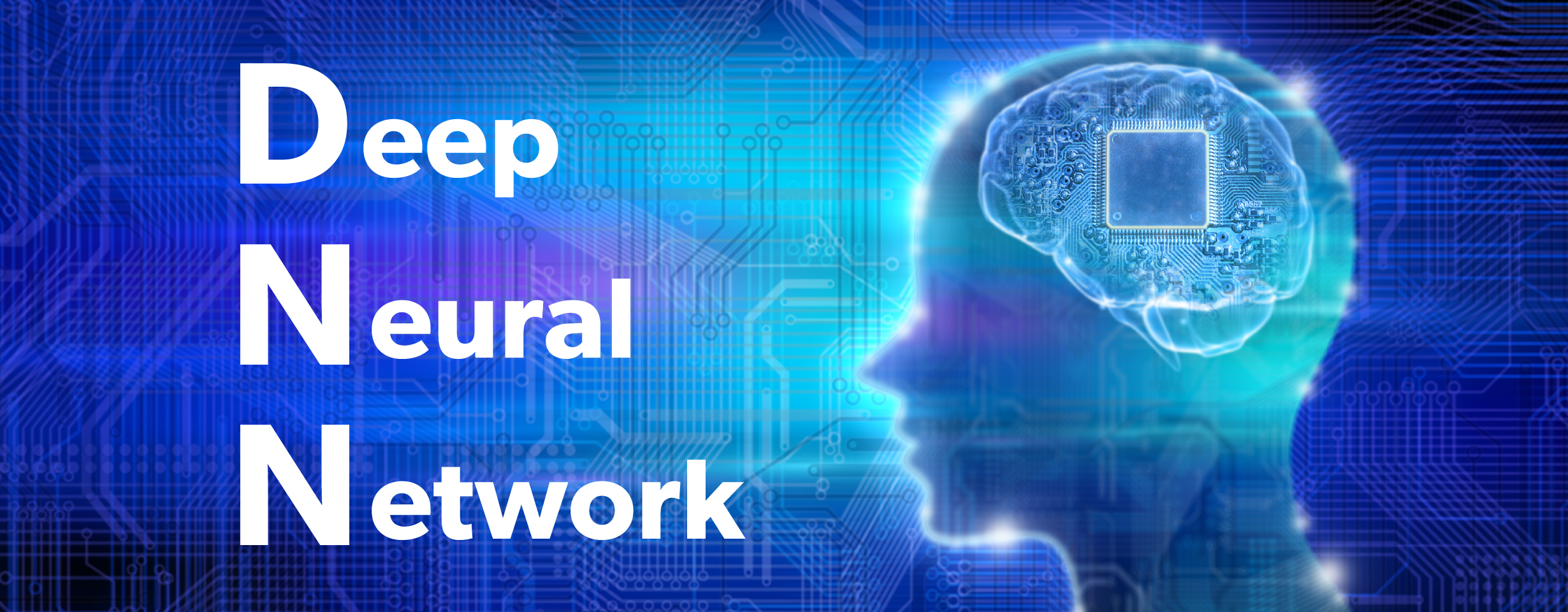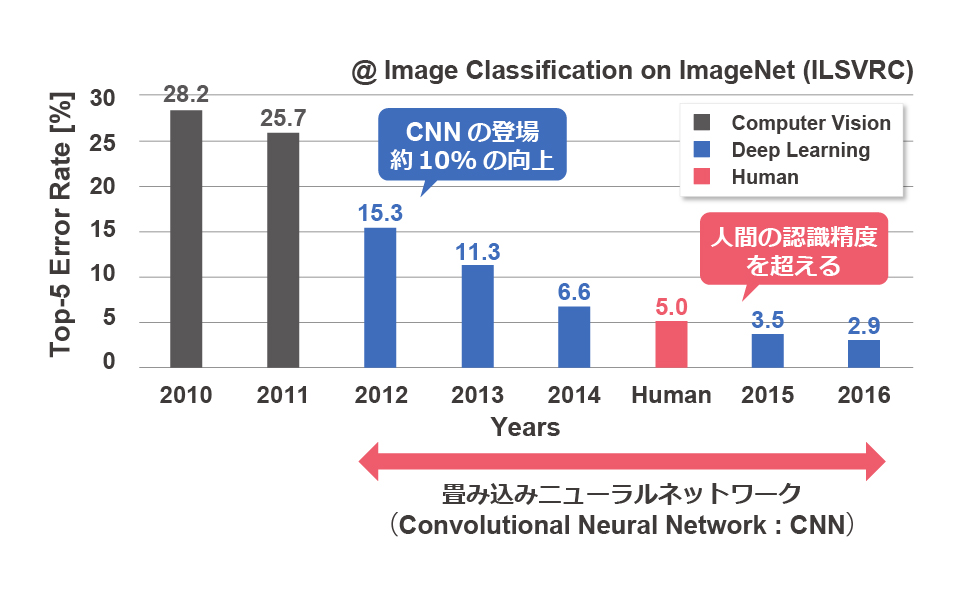DNN
本プロジェクトについて
本プロジェクトでは,画像を対象としたディープラーニングを扱うプロセッサの研究を行っています.
コンピュータ性能の飛躍的な向上,Webやインターネットデバイスの普及による大規模データの獲得,そして様々な研究の成果により深層学習(ディープラーニング)は大きく発展し,現在様々な分野で注目を浴びています.特に画像認識分野では圧倒的な認識性能を誇っており,一般物体画像の認識精度を競う大会ILSVRCでは,2012年の深層学習の登場以降精度が大きく向上し続け,ついに2015年には人間の認識性能をも上回りました.今後はこの深層学習が様々な分野に応用され,成果を見せるものと期待されます.
研究の目的
深層学習は,他の計算手法に比べ圧倒的な精度の達成が可能ですが,その精度の獲得のためには,現在の高速な計算機を用いても膨大な学習時間が必要となる課題を抱えています.たとえば,Google社が報告した人間の顔画像を認識するFaceNetと呼ばれる畳み込みニューラルネットワークでは,99.63%の超高精度を実現するために1000~2000時間もの学習時間を要していました.今後,更に大規模化したネットワークを用い,多種多様な問題に対し深層学習が用いられることが見込まれています.このとき,その問題1つ1つに対しこれ以上の学習時間をかけて学習することは現実的ではありません. そのため本プロジェクトは学習の高速化による学習時間の大幅な削減を目的とします.
研究内容
本プロジェクトでは,「並列化」をキーワードに分散メモリを用いたデータフローの新しいアーキテクチャを念頭に置き,深層学習を高速化するアルゴリズムを検討します.また,専用プロセッサによる高速な学習を実現することで,制御の時間粒度を小さくし,高スループット・高電力効率の獲得を目指します.

